Most modern racing games suck. Here's what they're doing wrong
Road rage

Have you ever driven a go-kart? It feels fast, doesn't it? Really fast. It's exciting and fun and you love the feeling of the tyres struggling for grip on the smooth track surface, screeching as you corner. You grip the wheel so hard, and every bump in the road travels through your body as you clatter around the track. Then you get out of the kart and look at the next lot doing it, and you wonder why they're going so slowly. They're not going any slower the experience is fast, but the reality is not.
This is the fundamental issue a racing game faces: It isn't enough to just simulate perfectly-rendered cars driving around perfectly-rendered tracks. It needs something more to become a great video game. In my opinion, modern racing games are forgetting this, favouring reams of 'features' over great gameplay. So, having played racing games for 25 years, I have the answer. I can tell you exactly what makes a great racing game. The secret recipe is right here. Let's do this.
Control
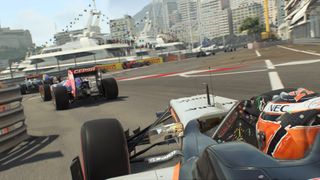
All classic games have great controls. Jumping on things as Mario is fun, soaring over Gotham as Batman is fun, shooting people in Call of Duty is fun. In a racing game, great control means enough grip to be responsive and 'go where you want to go', but slippery enough that there's some degree of challenge in driving well. Extra depth like a drifting system or controlling wheelspin can also be fun. If a racing game doesn't feel right, is too slow, too slidey, too grippy or even uncontrollably fast, it isn't a fun experience. Sadly, realistically simulating a real car will likely feel too slow and too slidey, at least to play on a control pad. That's just how it is, and that's why there need to be concessions built in to make it more enjoyable.
There has to be some feeling of weight, but not so much that the car feels like a laden shopping trolley. You have to be able to turn with confidence, but not so easily that there's no challenge in the cornering. It's a fine, fine balance and only a handful of games have ever got it right. But the gameplay is massively rewarding when there's always a way to take a corner slightly better than before.
Games that do it right: F1 '05, F1 2015, Gran Turismo 3, Sega Rally Championship, DiRT 2.
Games that do it wrong: Sega GT, Supercar Challenge, GRID 2.
Wow moments
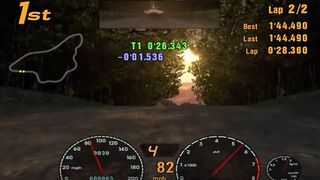
This doesn't necessarily mean over-the-top, artificial spectacle. Whether it's dappled sunlight through leaves (Gran Turismo 3), moments of startling and absolute realism (Project CARS' helmet cam), or an AI driver crashing spectacularly (Race Driver: GRID), a racing game with no wow factor is bland. The best racing games have moments of magic.
It shouldn't be overdone, unless it's so good it never gets old. It's certainly true that arcade racers have more of these, but they're designed to give you the biggest thrill possible over the duration of a three-minute game. But even a sim can have them. Look at Forza 6's Rio track. That view of Christ The Redeemer and the colourful houses above the tunnel are just as striking as more manufactured, obvious arcade eye-candy, and stick in the memory. The game would be worse without them..
Sign up to the GamesRadar+ Newsletter
Weekly digests, tales from the communities you love, and more
Games that do it right: Gran Turismo 3, Daytona USA, Driveclub, Project CARS.
Games that do it wrong: Ride, MotoGP 14, Colin McRae: Dirt
Atmosphere
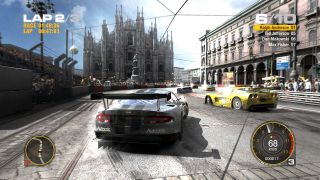
This is absolutely crucial. Imagine if the Superbowl took place in an empty warehouse on a rainy Tuesday, with no half-time show, commentary or national anthem. The best atmosphere can give you a real emotional connection to a game. A cheering crowd, flags waving in the stands, confetti thrown onto the track, fireworks going off it all adds immeasurably to the feeling of the race actually meaning something. Look at the difference the post-race fanfare of Gran Turismo 6 made compared to Gran Turismo 5's lame, apologetic 'FINISH' text and results graphic. Winning a race should be a celebration - it's the whole damn point of racing.
It doesn't need to be unrealistic/arcadey to convince, either. Project CARS' 'rain on the car roof' sound effect really makes you feel like you're cosy and warm inside your car during a rainstorm. And the 3D, rolling clouds and diagonal rainfall in the wind gives the environments a real sense of place. Finally, while music can really enhance the atmosphere of even a simple game (take 1986's OutRun for example), but it certainly can't make a dull race exciting - Forza 6, I'm looking at you.
Games that do it right: Ferrari 355 Challenge, Need For Speed: Shift 2, Ridge Racer: Type 4, Race Driver: GRID.
Games that do it wrong: Forza Motorsport 6, Gran Turismo 5, Supercar Challenge.
Competition between humans
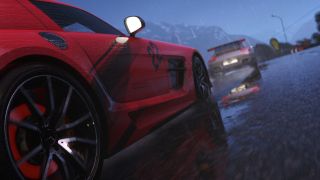
In order to have a good race, you need to actually be racing against something. The very best competition you can race against is yourself, which is why ghost laps time trial can make even a mediocre racing game enjoyable. Your opponent's skill level perfectly matches your own, because it is you.
The second-best competition is human vs human - in other words, multiplayer. This is best when the players are evenly matched in terms of personal skill and start with identical base machinery to test them. Driveclub works beautifully in this respect not because its traditional online races are great (they're not), but because it combines multiplayer with ghost mode and leaderboards, encouraging players to challenge each other. It breeds competition and the framework is now working properly. The game is a brilliant racing experience because the best two types of competition - against yourself and other people - are woven into everything you do.
Games that do it right: Driveclub, TOCA Race Driver 2, Mario Kart 7.
Games that do it wrong: F1 2015, Gran Turismo 5, The Crew.
Artificial Intelligence

Racing games differ from driving games because of the element of competition with the other cars. Driving games can still contain all of the other facets of racing game design (and be great games too), but their non-player vehicles are mere obstacles. Too many games stop short of offering true competitive artificial intelligence to race against. AI drivers need to be of extremely similar or totally equal performance, otherwise there's a mismatch and it isn't a fair race. However, they should always be beatable. You need some leeway in their coding to make it possible to catch and pass them, otherwise races would just be a procession which is no fun at all.
Motor racing is all about outfoxing the car in front or the car behind. On the attack, that might mean setting up your car's racing line a few corners before your move, to make sure you have the best exit speed onto a straight, outbraking your opponent or even going around the outside on a fast turn. Defensively, racing means being able to hold a car behind you. It means sometimes allowing a car through on the inside, because you know you'll have a faster exit and be able to retake the position on the cut-back. That is 'racing' - and very few 'racing' games contain it.
Games that do it right: GRID Autosport, DiRT 2, F1 Championship Edition.
Games that do it wrong: Forza 6, Supercar Challenge, Gran Turismo 5, Sumo's handheld F1 games.
Damage
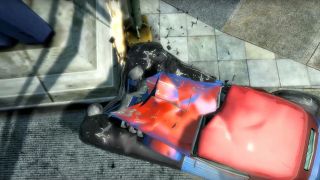
Car crashes are spectacular. Always have been, always will be. Obviously there's a safety aspect in real life, but racing games don't need to worry about loss of life. As a result, a good racing game can be totally undone if its damage modelling is poor because we know how crashes are meant to look. Impacts need to feel like impacts. Debris needs to blossom and wheels need to be ripped off. And heavy knocks should have the potential to adversely affect the performance of your car.
Race Driver GRID's damage is the best we've seen in serious racing games on console, a logical evolution of TOCA Race Driver 2 on the original Xbox. You can rip a corner off your car if you aren't careful, and that has a real effect on the gameplay. In multiplayer, hanging back at the start and keeping out of trouble rewards you with a car that still works when everyone else is hobbling around like a crippled spider. The glee of flying past and hearing someone say over the headset 'How has he still got his back wing?' is immeasurable. Car damage is exciting and modern games are not doing it well enough.
Games that do it right: Downforce, TOCA Race Driver 2, Race Driver GRID, Burnout Paradise.
Games that do it wrong: Gran Turismo 5, Forza 6, The Crew, Forza Horizon 2.
Challenge
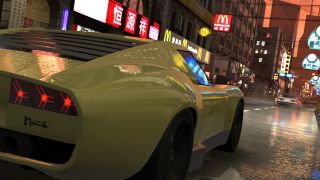
Risk vs reward is what motor racing is built on. Brake too late, or run too wide and you end up with nothing. Pull it off and you look (and feel) like a genius. No-one's amazed at the tightrope walker with a safety net underneath. Rewind buttons spoil racing completely, and I'm ready to leave them behind.
Racing games should not be afraid to say you failed. Ferrari 355 Challenge on Dreamcast is ludicrously difficult. But, like Bloodborne, when you finally prevail, the euphoria is incredible. Nobody is going to feel proud that they won a championship after 44 rewinds and 12 restarts. The game should be designed to make success possible, but not guaranteed.
Games that do it right: Gran Turismo 6, Project Gotham Racing 4, Downforce, F355 Challenge.
Games that do it wrong: Forza 6, Project CARS, F1 2015.
Rivalry
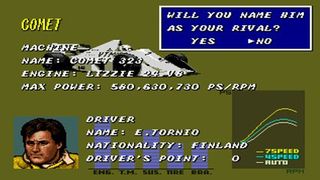
DiRT 2 has distinct rivalries with its personality-led races, Super Monaco GP back in the day built its progression around it (which still works superbly), and even F1 2015 is made more exciting when you have a definite rival for first place in the championship. Just like real motorsport, a little hot competition adds spice to the racing.
This doesn't necessarily need to be built into the game like a story. Simply naming AI drivers and allowing you to develop your own feuds and anecdotes around them will work wonders for your emotional investment. Faceless AI drones feel like robots and victory doesn't really mean anything. Forza's Drivatar system should be the absolute best at this as you're often racing representations of people on your friends list, but these simulations are far too inconsistent in their driving to truly convince.
Games that do it right: Super Monaco Grand Prix, F1 2014, DiRT 2.
Games that do it wrong: Gran Turismo 5, Forza 6, GRID 2.
Track Design

This is absolutely crucial for a great racing game. A good track needs fast sections to increase risk and excitement, but also corners that require skilful use of the brakes and a solid racing line. Making a track is an art form and I can't remember the last truly great original track I've played from a modern game. Probably Gran Turismo 5's Cape Ring. A little over-long, perhaps, but a seriously great track to drive and master. There's nothing wrong with photo-realistic real-world tracks, as they can be ace too. But again, not all real tracks make great additions to a racing game.
The 1990s were the golden age for track design. With limited graphical capabilities, designers in the 32-bit generation were forced to make their tracks memorable for other reasons. Arcade or sim, the bar was exceptionally high, usually because games at the time only offered a handful of tracks to race on. They were meant to be fun and challenging the first time you play, and the 1,000th. Modern racers seem to have the idea that more tracks makes a better game, or that more cars will somehow make driving on dull tracks more fun. It doesn't. It's just a slog.
Games that do it right: Ridge Racer: Type 4, Sega Rally Championship, Gran Turismo.
Games that do it wrong: Sega GT, Mario Kart 8, Project Gotham Racing 3.
Speed

This might be an obvious one, but a great racing game also needs to feel fast. There are ways to make this happen even if the car simulated is only travelling at a modest lick. Low camera angles, a slightly fish-eyed lens trackside objects also to be close to the road, or overhanging it. The road surface should have detail on it too, and most certainly not repeated textures. Even Forza 6's Indianapolis has track textures that repeat so obviously, at times it look like you're traveling backwards.
The sensation of tailing another car at your vehicle's limit should make you grip your controller tighter. Driving fast, on the very edge of control is exciting. There has to be an element of trust that the other guy isn't going to brake, so the AI needs to behave like you, which is very difficult to achieve. Every racing game claims to have AI that does that, but AI cars rarely look like they're on the ragged edge.
Games that do it right: Burnout 3, F-Zero GX, GRID Autosport, Wipeout HD, Extreme G 3.
Games that do it wrong: Supercar Challenge, Flatout, Buggy Heat, Gran Turismo 5.
And that's it.
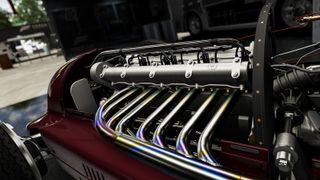
Notice I didn't say anything about needing hundreds of cars, a photo mode, official licenses all of those things are certainly brilliant and add value and emotional attachment to the experience (especially for car enthusiasts), but they are not what makes a game enjoyable to actually play.
I also considered a slide for tactical depth, but I don't believe it's as important as the others. Managing fuel or tyre wear can make for an involving experience, but there are so many great racing games with none of that in, so I don't consider it an essential aspect. Similarly, frame rate is not necessarily a deal-breaker (Daytona USA runs at 20fps on Saturn yet still plays superbly). But a 60fps refresh rate certainly helps.
There isn't any one racing game that perfectly combines all of these elements. Race Driver GRID is probably closest, but its core control is slightly unsatisfying. One day, we will get the ultimate racing game. I just fear we're currently heading away from it, not toward.
Justin was a GamesRadar staffer for 10 years but is now a freelancer, musician and videographer. He's big on retro, Sega and racing games (especially retro Sega racing games) and currently also writes for Play Magazine, Traxion.gg, PC Gamer and TopTenReviews, as well as running his own YouTube channel. Having learned to love all platforms equally after Sega left the hardware industry (sniff), his favourite games include Christmas NiGHTS into Dreams, Zelda BotW, Sea of Thieves, Sega Rally Championship and Treasure Island Dizzy.
Most Popular



